| |
Snapshot 1981
Drew Middleton, award winning New York Times reporter and columnist
often wrote on the affairs of the American military with remarkable
precision. In this mid May 1981 article, he discussed what was going
well and not so well for the 7th Army. Three years earlier, he had
reported in detail on the Blackhorse after a visit to Fulda. On this
occasion, he spent no time with the border cavalry but rather
concentrated on the 8th Infantry Division.

How much of what Middleton reported reflected the state of the
Eaglehorse; your recollections are as good or better than mine. I
left Kissingen shortly after the article was published and recall
the squadron as hugely improved over what I first encountered three
years earlier.
Gone were the troublesome M551s and reasonably reliable M60A1s -
both replaced with the M60A3s with M1 scheduled to be fielded in a
year or so. The Improved TOW vehicle, M901 added additional tank
killing capability to the scout platoons; each troop had a dedicated
FIST team and track that trained with the unit of a full time basis
and the mortars had their own FDC track. We had newer GSRs sets,
first generation thermal sights on tanks and in the hands of scouts,
the HOW had the most recent model of the M109 howitzer and all the
squadron’s five ton trucks were new. The jeeps and 2 ½ ton trucks
were still vintage with the latter particularly troublesome.
In 1981, the barracks were crowded with the squadron at or near 100%
fill and new troops seemingly arrived weekly as the MTO & E evolved.
The billets were in need of a face lift and a plumbing upgrade and
this happened in the mid 1980s. Was there drug and alcohol abuse -
yes I suppose so but seemingly less than my earlier memories of the
late 1970s. Had the quality of the troops improved - yes - most
certainly.
Here is
Middleton’s article, his snapshot of the Army in Germany in mid 1981
accompanied by my snapshots from the same period.
U.S. 7TH ARMY: READY TO FIGHT; Military Analysis
By DREW MIDDLETON, Special to the New York Times
Published: May 17, 1981
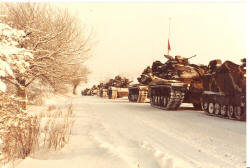
FRANKFURT— The United States Seventh Army, a basic element in NATO's
defense of Western Europe, is enjoying a new confidence based on a
flow of new weapons, more money for long deferred projects and a
perceptible rise in motivation and discipline.
Balancing these positive factors are serious problems over the
location of important units and suppliers, obsolescence of most of
the Army's wheeled vehicles and appalling conditions at most bases
and their barracks.
These conditions are so serious that a staff officer predicted that
nearly half the commissioned and noncommissioned officers scheduled
for assignment to the Seventh Army this summer would be ''no
shows.'' This means that they will choose to retire rather than
accept the shoddy billets and primitive working conditions.
The Seventh Army is not the perfect fighting machine its leaders
would like it to be. But it is a better armed, more cohesive force
than its detractors allege and is superior to the turbulent, drug
ridden force of five years ago.
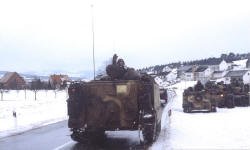
New Equipment Over Next 6 Years
These conclusions are the result of a week's visit to armored,
infantry, artillery and supply units of the Seventh Army and talks
with soldiers, noncommissioned officers and junior and senior
officers in field and staff posts.
One cause for confidence is that over the next six years, the
Seventh Army will receive more than 300 items of new equipment.
These will range from protective clothing for nuclear, biological
and chemical warfare to the M-1 tank and a family of antitank and
antiaircraft missiles.
Other items, such as the improved TOW vehicle and the M-60A3 tank,
are already reaching units. Others, like the TACFIRE and FIREFINDER
team, are on the way.
TACFIRE and FIREFINDER are expected to strengthen the artillery,
which, officers said, is deficient in numbers of guns and surface -
to - surface missiles. FIREFINDER, based on radar, picks up enemy
mortar and gunfire. TACFIRE instantly computes the range, battery
and type of round to answer the incoming fire.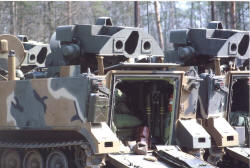
The Seventh Army's trucks and jeeps are wearing out. At one motor
pool there were two two-and-a-half-ton trucks with more than 100,000
miles on their odometers. Others had gone 75,000 miles. Jeeps and
trucks are afflicted with rust, and as they age the time needed for
maintenance increases. 'Well-Trained Combat Army'
Gen. Frederick C. Kroessen, the Seventh Army commander, believes
that he has a ''well-trained combat army'' that can defend the
borders of Western Europe but that he must rely on reinforcement and
resupply because there is ''no capacity in the European theater to
sustain a battle.''
Officers and enlisted men believe that the existing deficiencies in
some weapons will be met by a Defense Department acutely aware of
the Seventh Army's needs. They are less sure that the Army will be
repositioned to more tactically realistic sites and that working and
living conditions will be improved.
The most striking instance of the need for repositioning is the
location of the Eighth Infantry Division of V Corps. The Eighth is
the largest division in the Army, with 4 brigades, more than 21,000
soldiers, 490 tanks and nearly 900 armored personnel carriers. A
'Worrisome' Situation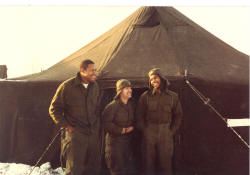
But the bulk of this division is stationed west of the Rhine River,
in areas around Wiesbaden, Mainz and Mannheim. The estimate, perhaps
optimistic, is that the division's covering force would take 12
hours to reach its war station near the Fulda Gap, in eastern Hesse
state, the main force would need 25 to 27 hours and the artillery
would take 20 hours.
If the North Atlantic Treaty Organization has a week's warning of a
possible Soviet invasion, these times would suffice. Most
intelligence specialists believe that the alliance will have that
much warning, but there is no guarantee.
The present situation, which one divisional commander called
''worrisome,'' could be improved if what the Army calls its Master
Restationing Plan is carried out.
Relocation of the division's brigades is linked to a cure for the
serious morale problem arising from the working and living
conditions of the troops. These conditions are bad throughout the
Seventh Army and the cost of correcting them would be astronomical.
'Generally Appalling' Conditions
One estimate is that $2 billion would be required to complete the
restationing program. General Kroessen recently reported to Congress
that conditions in Army base and housing areas are ''generally
appalling.'' The large military complexes, he emphasized, are urban
facilities that are old and obsolete.
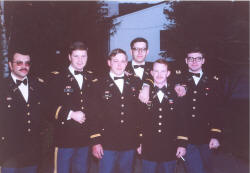
Members of Congress interested in military affairs respond that NATO
countries, specifically West Germany, should help pay for new
construction. The West German Army and Air Force are housed in
modern buildings superior to those available to the Seventh Army.
The Second Battalion of the 75th Artillery Regiment is based at
Fliegerhorst, a World War II Luftwaffe base near Hanau. In most
American prisons, such working and living conditions would probably
lead to riots.
The battalion has only one maintenance shed, which has just two pits
for vehicle repair. Water seeps through the ceiling. The lighting is
poor, the working conditions cramped.
The barracks are even worse, although they appeared to be average
for the Seventh Army. Six men occupy a room intended for four. The
lighting fixtures frequently fail and, because of the need to save
energy, only one light is used. In the winter the cold is so intense
in most rooms that soldiers take their sleeping bags and head for
the warmth of the boiler room.
The barracks' foundations are crumbling. Water seeps into the
cellar, toilets back up. Water drips from the ceilings and runs down
the walls.
With the soldiers living in these conditions. a visitor felt it
remarkable that they retained their interest, even enthusiasm, for
their profession.
|
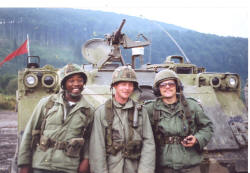 |
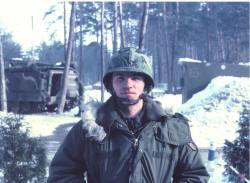 |
April 2016 |
|